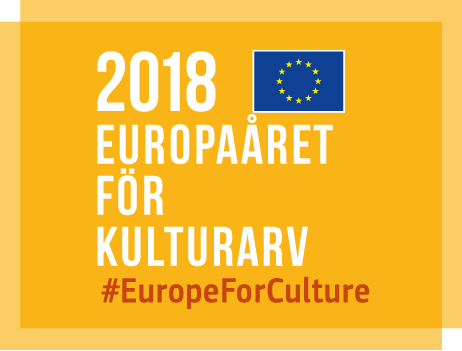
European Year of Cultural Heritage 2018
2018 was the European Year of Cultural Heritage, a year of events and activities all around Europe to get people interested and involved in cultural heritage.
Cultural heritage is the fabric of our lives and societies. It surrounds us in the buildings of our towns and cities and is expressed through natural landscapes and archaeological sites. It is not only made up of literature, art and objects but also by the crafts we learn, the stories we tell, the food we eat and the films we watch. Cultural heritage brings communities together and builds shared understandings of the places we live in. The digital world too, is transforming the way we access heritage.
The year intended to encourage more people to discover and explore the opportunities of Europe’s rich and diverse cultural heritage. At the same time, it was supposed to draw attention to the challenges cultural heritage faces, such as the impact of the digital shift, environmental and physical pressure on heritage sites, and the illicit trafficking of cultural objects.
The EU-initiative ”European Year of Cultural Heritage 2018” raised and focused on ongoing and planned events and projects, but is also intended to be a starting point for new transnational cooperation projects.
Each member country in Europe presented high quality cultural heritage projects during the year with the aim of showing the breadth of cultural heritage, especially engaging young people. The EU launched a joint campaign site for the year on the of 7 December 2017.
In Sweden, the Swedish National Heritage Board coordinated the Year.
What was the European Year of Cultural Heritage 2018?
- An EU initiative to emphasize the importance of cultural heritage for cultural diversity and intercultural dialogue. The year also focused on the cultural heritage’s contribution to the economy and as an important part of EU relations with other countries.
- A common communication platform to highlight already ongoing and planned projects and events, but also a stepping-stone for transnational cultural heritage project in Europe.
Goals of the European Year of Cultural Heritage 2018
- Promote cultural diversity, intercultural dialogue and social cohesion
- Promote the role of heritage in the cultural and creative sectors (including SMEs) and local and regional development
- Emphasize the role of the cultural heritage for EU external relations, including conflict prevention, reconciliation of conflicts and rebuilding heritage destroyed
- Raise and highlight projects and events that specifically engage young people as well as qualitative heritage projects in collaboration with, for example, authorities, hospitals, industry, organizations, regions, institutions, federations, etcetera.